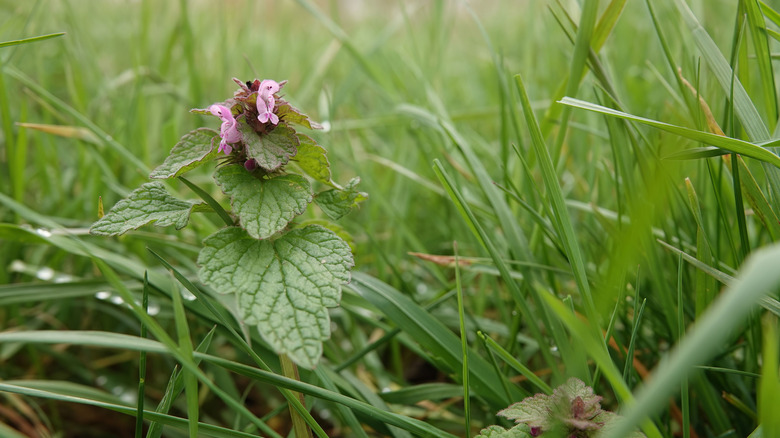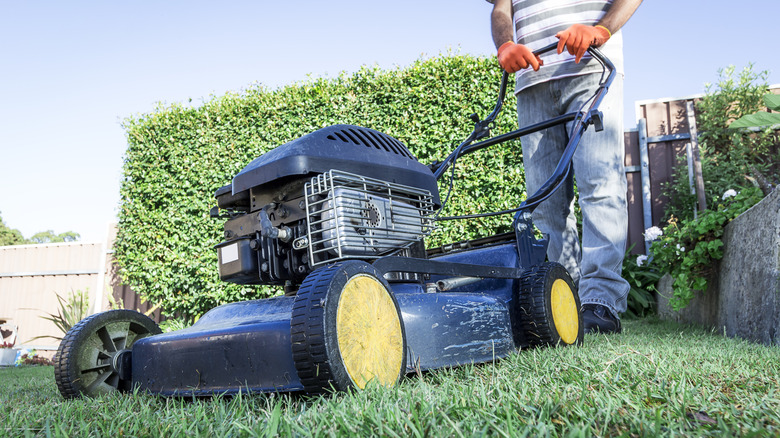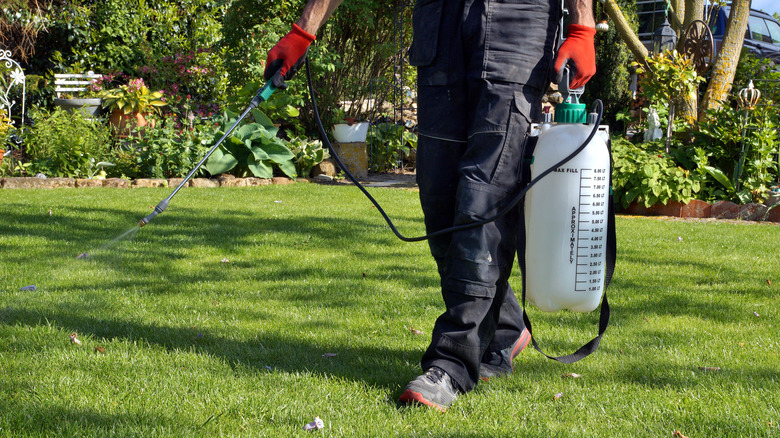How To Control Purple Deadnettle In Your Lawn
We may receive a commission on purchases made from links.
Doesn't caring for a lawn seem like a suspense novel punctuated with relentless battles, shifting allegiances of flora and fauna, hidden secrets of the soil, and crucial victories? Yet, like many proofs of Mother Nature's giddy sense of irony, the dazzling array of colors brought by the peculiar visitor that is purple deadnettle threatens to disrupt your slow dance with all that is green and lush. It's a flamboyantly clad rogue cloaked in startling purple, embellishing your green carpet with patches of vibrant color. But as bewitching as purple deadnettle might seem, a line must be drawn between its alluring wildness and the adverse effects on your cherished lawn. The sinister secret behind this aggressive grower's prolific growth becomes apparent when you realize that it releases numerous seeds. Left unchecked, it can overrun your lawn, turning it into its playground.
"How do I get rid of purple deadnettle in my yard?" you wonder. You have two choices: physical intervention or chemical weed control. The physical strategy involves utilizing your strength, including plucking them out manually and adopting the consistency of a seasoned barber, giving your grass frequent trims. On the other hand, chemical control is your stealthy ally, best suited for those who prefer tact over brute strength. Some pre- and postemergence herbicides with 2,4-D and dicamba can target the shrewd adversary without upsetting your lawn's tranquility. With that in mind, let's dive into the specifics of saving your lawn from purple deadnettle's onslaught.
How to remove lawn purple deadnettle without chemicals
To get rid of purple deadnettle naturally, charge headfirst with the good old hand-pulling. Wait for the aftermath of a rain shower or drench your lawn, letting the soil get damp and softer. Now, dive in, firmly clutch the deadnettle from the base, and jerk it upward to uproot it entirely. Beware that hand-pulling can be arduously time-consuming, making it ideal for small-scale weed control. Still, leaving even a single cutting behind could be your Achilles's heel, encouraging the weed to sprout back.
Next on your deadnettle-busting mission is regular mowing, which is most effective before the invaders blossom and release seeds. Tune your mower height, ideally to around 2 to 3 inches (depending on the grass species), and launch regular incursions. Bagging and disposing of the clippings to prevent flowered deadnettle seeds from staging another coup on your lawn. Remember, this is a delicate balance — mowing too close or too often can weaken your lawn. Also, mowing flowering deadnettles can inadvertently scatter the seeds, triggering the problem you're trying to eliminate.
Another line of physical defense against purple deadnettle is a well-tended lawn, with primary recommendations being watering, fertilization, and aeration. These measures ensure your lawn's roots stay quenched, nourished, and breathing freely, thus smothering weeds. However, factors like soil type, grass species, and local weather are all integral to developing a custom lawn care strategy. In addition, beware of overwatering or over-fertilizing — success lies in balance and good strategy.
Chemical control of purple deadnettle in lawns
Effective chemical control of these weeds is a glorious result of strategy, timing, and knowledge, all central to successful lawn care. Launch your first line of defense using pre-emergent herbicides such as Isoxaben, a renowned conqueror of broadleaf weeds like our purple enemy. Dithiopyr, enlisted in Dow AgroScience's Dimension 2EW on Amazon, makes another viable addition to your arsenal. As a double agent, this product is well-equipped for pre- and post-emergence applications in cool and warm-season lawns. For optimum suppression, late fall or early winter before the deadnettle springs up is the perfect timing for your pre-emergent strike. But remember, these herbicides aren't babysitters for new lawns; they are only suited to defend established lawns.
While pre-emergence herbicides are the preventative shield, their post-emergence counterparts are the reactive sword of weed control, striking down the sprouting enemies. Best utilized when the weeds are in their youthful stage, herbicides laced with 2, 4-D, MCPP (mecoprop-P), or dicamba are worthy contenders here. Examples include Q4 Plus Turf Herbicide on DoMyOwn and Super Trimec Broadleaf Herbicide on Amazon. Other active ingredients include metsulfuron, trifloxysulfuron-sodium, sulfrentrazone, fluroxypyr, and Triclopyr. Be careful, though. Herbicides containing dicamba can mean doom for trees and shrubs if sprayed over the roots. And whether you're deploying a pre- or post-emergent herbicide, never let the label on your herbicide out of sight. Detailed instructions and precautions on these labels promise safety with success in your purple deadnettle warfare.


